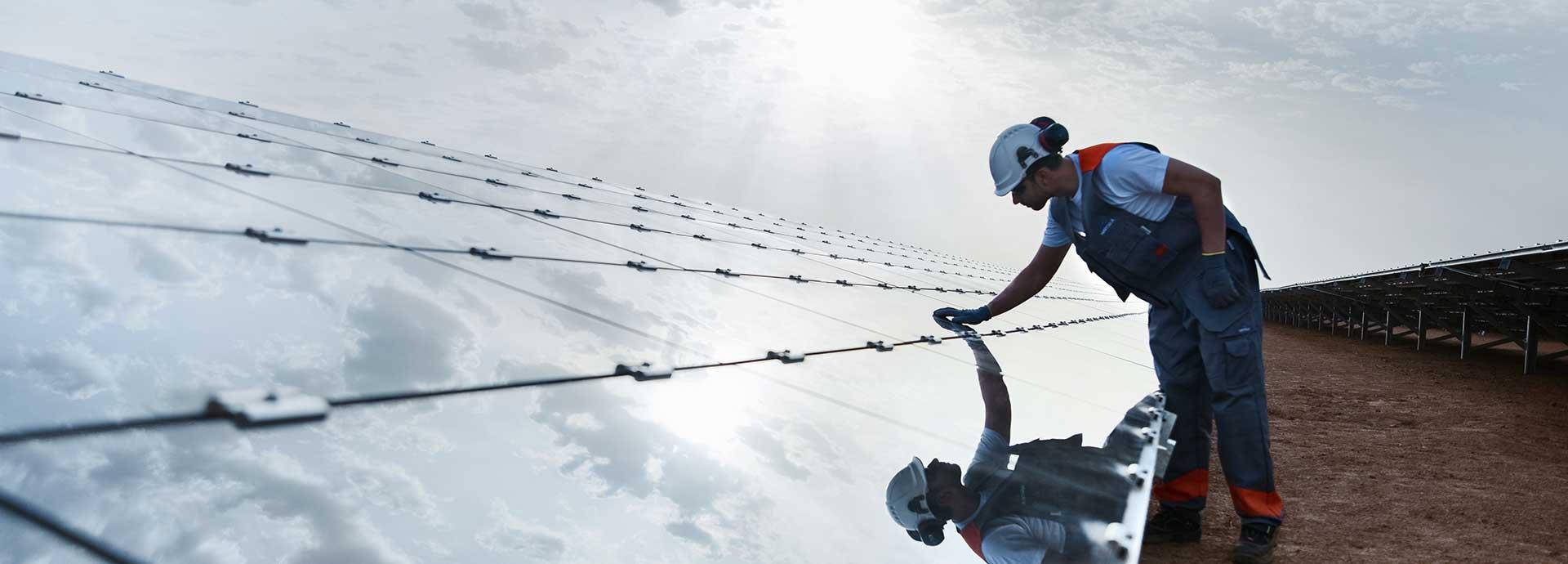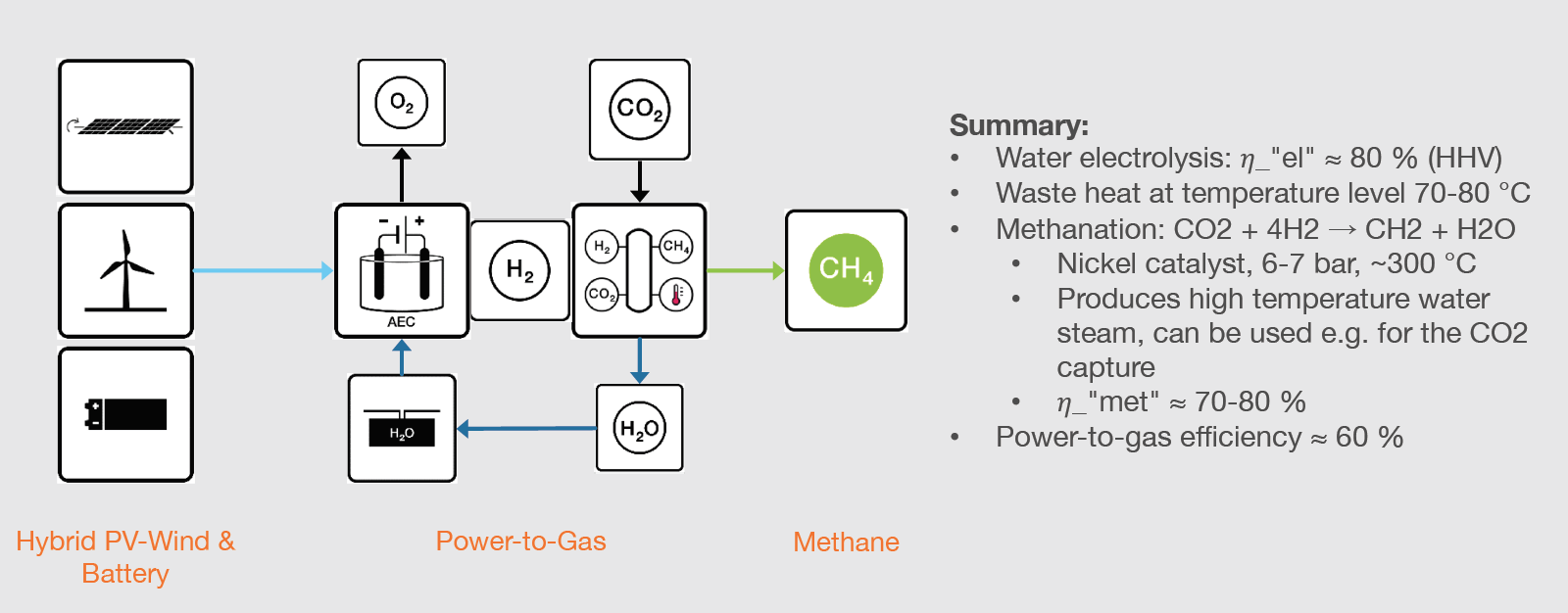

Up until now, renewable energy generation has been driven by weather, but renewable energy can also come from a range of other processes where any kind of excess is created, and – perhaps most crucially – from those that generate excess carbon in the form of emissions.
‘Power-to-X’ is an umbrella term for a number of different emerging technology solutions for electricity conversion, energy storage, and energy reconversion, all of which use surplus power in one form or another.
Power-to-X is going to play a key part in the future of energy generation – from power-to-gas solutions, where electricity is used to split water into hydrogen and oxygen through electrolysis, to solutions where hydrogen from an electrolyser is combined with carbon dioxide and the two gases are converted into synthetic renewable methane, as well as other potential power-to-fuel solutions that can be developed to create synthetic fuel.
Synthetic fuels to mitigate climate change?
here is a growing consensus that synthetic fuel is set to play an important part in mitigating climate change. What makes the possibility of generating fuel from excess CO₂ such a compelling prospect is that it has the potential to create a circular carbon economy, whereby the CO₂ that would otherwise be released into the environment is instead reused, thus minimising the climate impact of CO₂ and preventing new fossil resources from being exploited for fuel.
Instead of continuously using more and more of the planet’s precious fossil fuel reserves, Wärtsilä envisages a future in which it will be possible to capture the CO₂ that is emitted from combustion processes from the air and re-circulate it in what could potentially be an infinite energy loop.
Power-to-X currently remains as the missing piece in the puzzle as Wärtsilä seeks to achieve its vision of a 100% renewable energy future. However, this year, measures are being put in place to ensure that these technologies will be made available to be incorporated into future products and services from Wärtsilä.
Direct air capture of CO₂
So what goes into the process capturing and reusing CO₂ in order to form synthetic fuel?
There are three key ingredients: carbon dioxide, hydrogen and renewable electricity. Hydrogen can be obtained from water using an electrolysis process, which splits into hydrogen and oxygen. Meanwhile, carbon dioxide comes from various industrial processes as a waste stream or is captured directly from air. The two are combined together through a chemical synthesis using catalytic conversion technology and renewable electricity as a power source. The process produces synthetic fuels. There are various conversion processes available to produce a variety of synthetic alkanes.
When combined together, carbon and hydrogen produce hydrocarbons, or alkanes, such as methane, methanol and dimethyl ether (DME), all of which can be used as fuel across a variety of power generation and transportation applications.
Whereas traditional hydrocarbons are refined from crude oil, synthetic hydrocarbons are created through a chemical synthesis process such as the one detailed above. Both synthetic and traditional hydrocarbons can be used as fuel. The power-to-gas process.
The power-to-gas process.
Seeking synthetic fuel partnerships
Up to now, “quick-fix” technologies designed to resolve the climate change issue have been regarded with suspicion by the global scientific community. However, plans to capture CO₂ directly from the air – essentially imitating the natural behaviour of trees – have begun to gain more and more credibility. This concept was, in fact, first developed by German Physicist Klaus Lackner in the mid-1990s, but has more recently been adopted by a number of companies around the world, as direct air extraction has become an increasingly viable prospect.
Earlier this year, Icelandic Carbon Recycling International (CRI) was named the winner of the SparkUp Energy Challenge, a competition arranged by Wärtsilä to identify start-ups in the Power-to-X technology field and to jointly develop future technologies with them. CRI’s solution is based on a technology that uses CO₂ and hydrogen made with renewable power and turns them into synthetic methanol. Through the SparkUp Energy Challenge, Wärtsilä has taken a new approach in exploring business opportunities in emerging technologies, bringing the Wärtsilä venturing model to life through start-up collaboration.
CRI is already producing renewable methanol from carbon dioxide, hydrogen and electricity on a commercial scale for fuel applications, greener chemicals and products, at its production facility in Grindavík, Iceland. It also has the capacity to engineer, build and operate emissions-to-liquids methanol production plants. The company will be collaborating and co-creating solutions alongside Wärtsilä’s energy experts, with a view to maximising the synergies between the two companies.
A future packed with potential
Synthetic fuels can effectively be applied everywhere that fossil fuels are currently in use today – from aeroplane engines to cars, trucks, power plants and seagoing vessels.
From Wärtsilä’s perspective, there is also good potential to use synthetic fuels in engine-based power plants as well as across other Wärtsilä engine products. The precise area of application will depend on the type of fuel that need to be used.
For example, whereas synthetic methane would typically be used in a gas engine, synthetic methanol and synthetic DME would be most suited to diesel engine with dual fuel pilot injection.
At this time, synthetic fuel production is still in its infancy. The processes, systems and technologies required to make this vision a reality are still in the pilot stage and will need to be extensively evaluated for both commercial and technical feasibility before they can be scaled up and industrialised. However, with evidence suggesting that this fuel option could be 100% CO₂ neutral, it is widely regarded as a very promising prospect, one that could be further developed over the next five to ten years.
As things stand, Wärtsilä remains firmly committed to developing Power-to-X concepts in general, and synthetic fuels in particular, to the point where they will be ready to realise their full potential and have a truly positive impact on the future of the planet.

